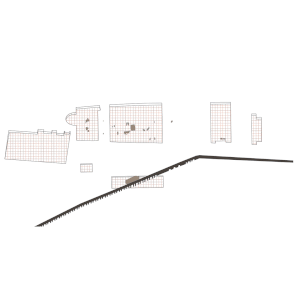The aqueducts were conceived and constructed at the scale of the city, and as the city has grown out to meet the aqueducts, their permanence has molded the urban fabric. The fragments of the Aquae Claudiastill exist at a monumental scale, however between the fragments, the city has incoherently expanded into the void. The scale of the graft is at the urban scale, at the scale of the city. The graft mends the Acquae Claudia and the periphery, giving coherent form to the spaces around it. In the voids of the Acquae Claudia is the marginal space of the city, where the marginalized have made their homes. These unplanned neighbourhoods have been left on the edge, without a plan and disconnected form the city. Mending the Acquae Claudia frames these neighbourhoods as being inside the formal city, not as slums at the edge.
This segment of the project formalizes the open space at the edge of the city, which is at present only bounded on three of its four sides. On the fourth, it melts back into the informal fabric of the neighbourhood. It is in the unformed, marginal space where we construct the ‘other’, the transient, the migrant, the destitute. The encounter is always washed with the idea of ‘the other’. ON THE EDGE, the space of encounter is not in the margin, but in the interstitial zone. The relationship of the resident stumbling into the transient is inverted, giving the transient a refuge from the public sphere. In section, a gradient of public visibility to private repose.
Site Perspective
Section Perspective
Urban Space Diagram
Site Plan
Elevation












